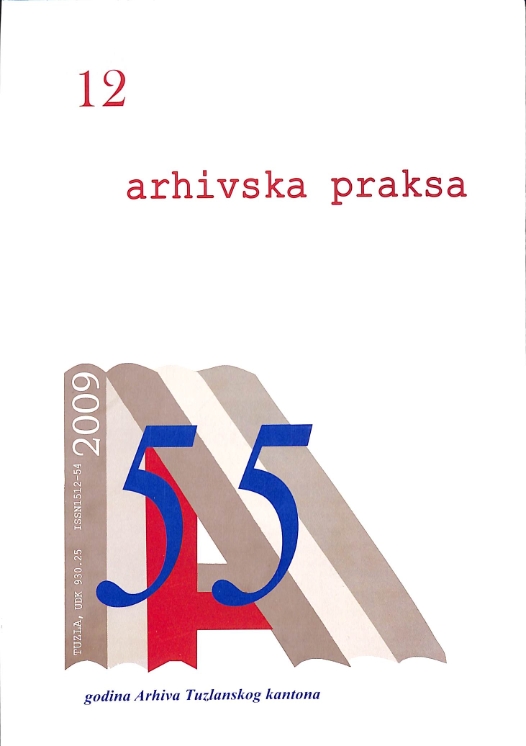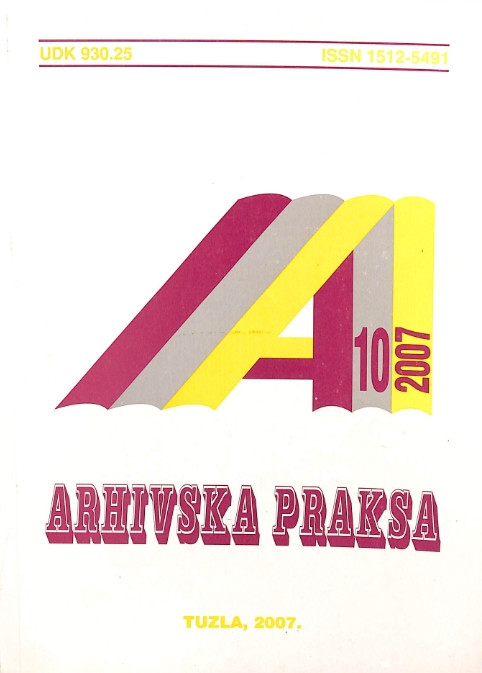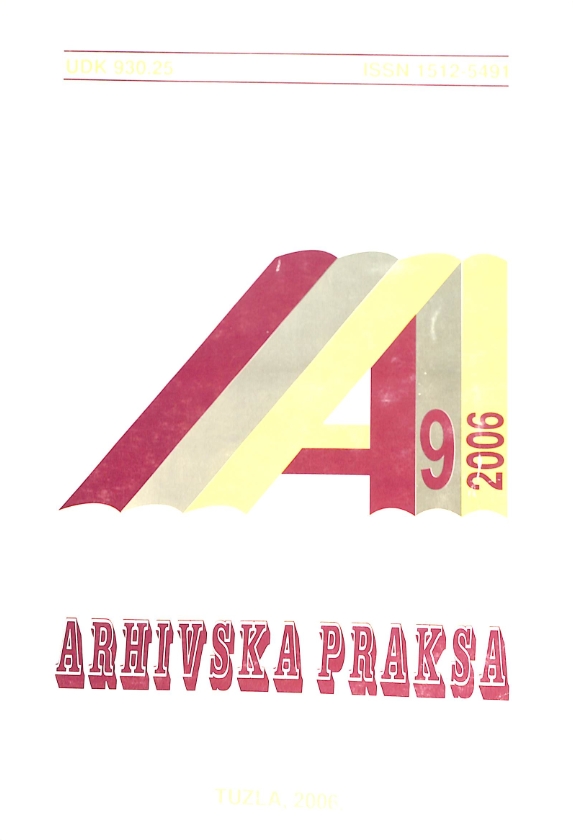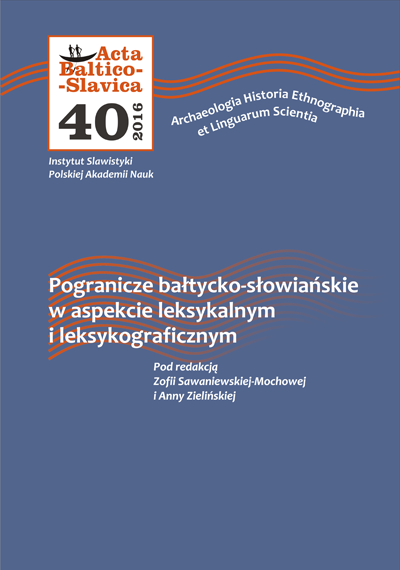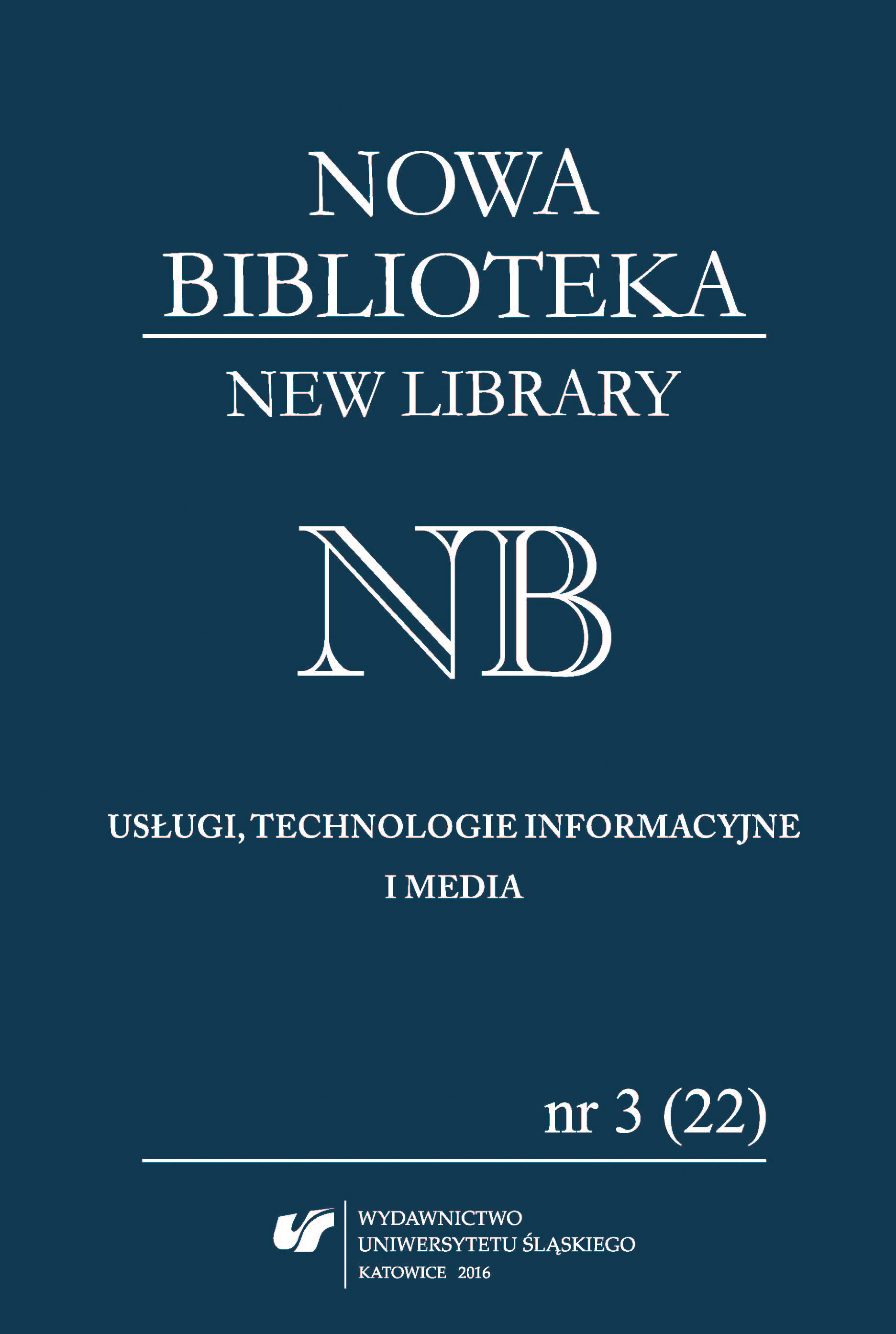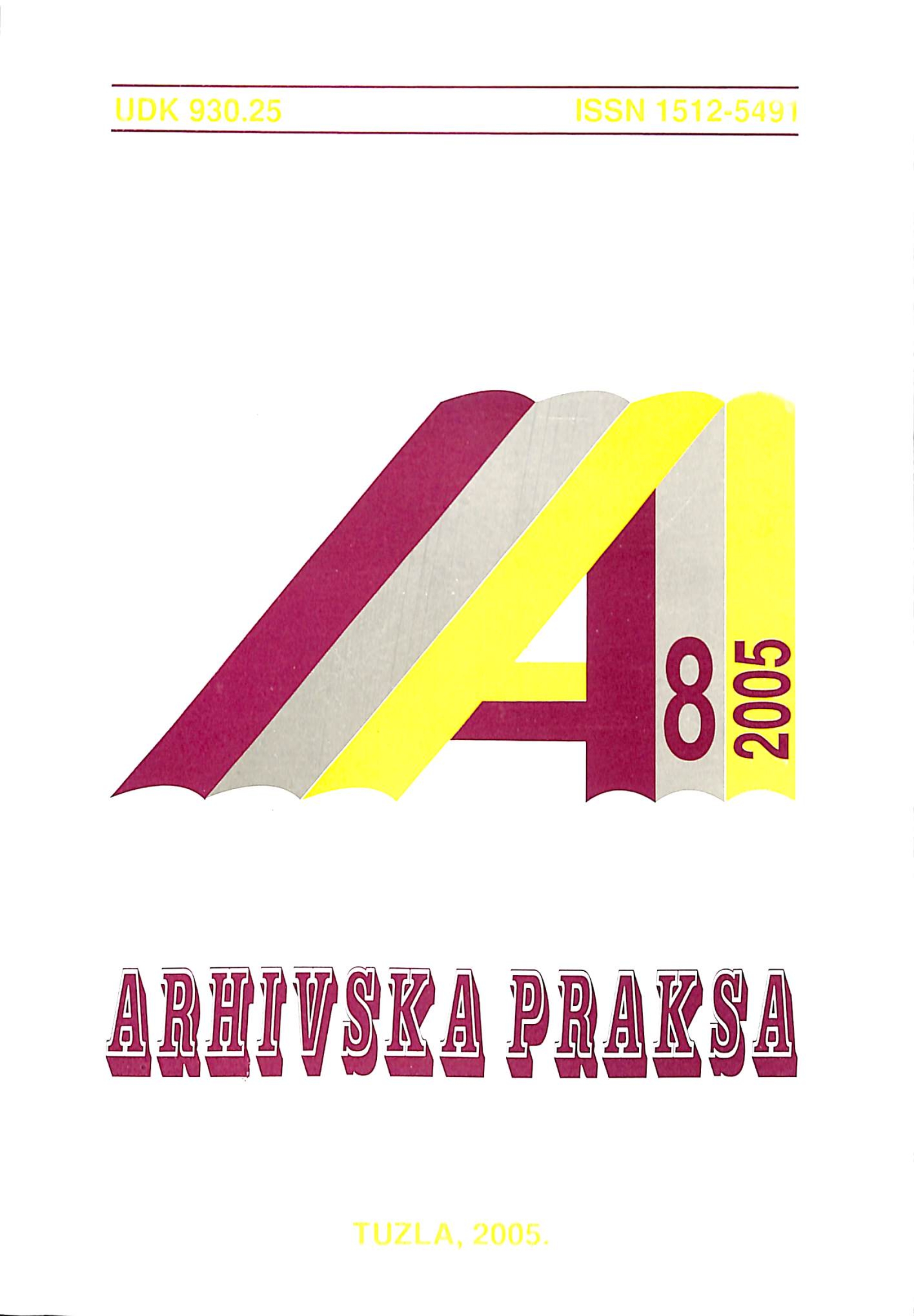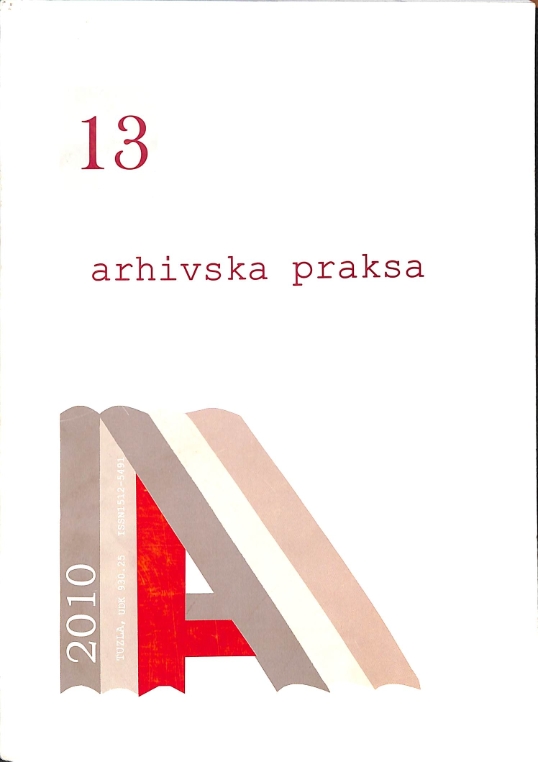
ISKUSTVO OBRADE NEKONVENCIONALNOGA GRADIVA U DRŽAVNOM ARHIVU U OSIJEKU
Although the State Archive in Osijek has almost all kinds of unconventional material, this work is based on only two, and these are the photographs and a documentary film. Due to the large number of images (approximately 55,000) and documentaries (114) as well as high demand for materials by the user and the Archive, at the end of 2007, the analytical processing of pictures and documentaries. Inventories are made in the form of a table with 11 elements of description through which describes most of the photos and all documentaries.
More...
